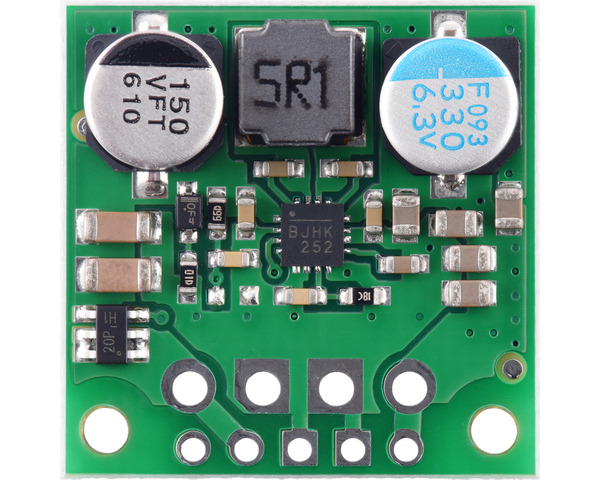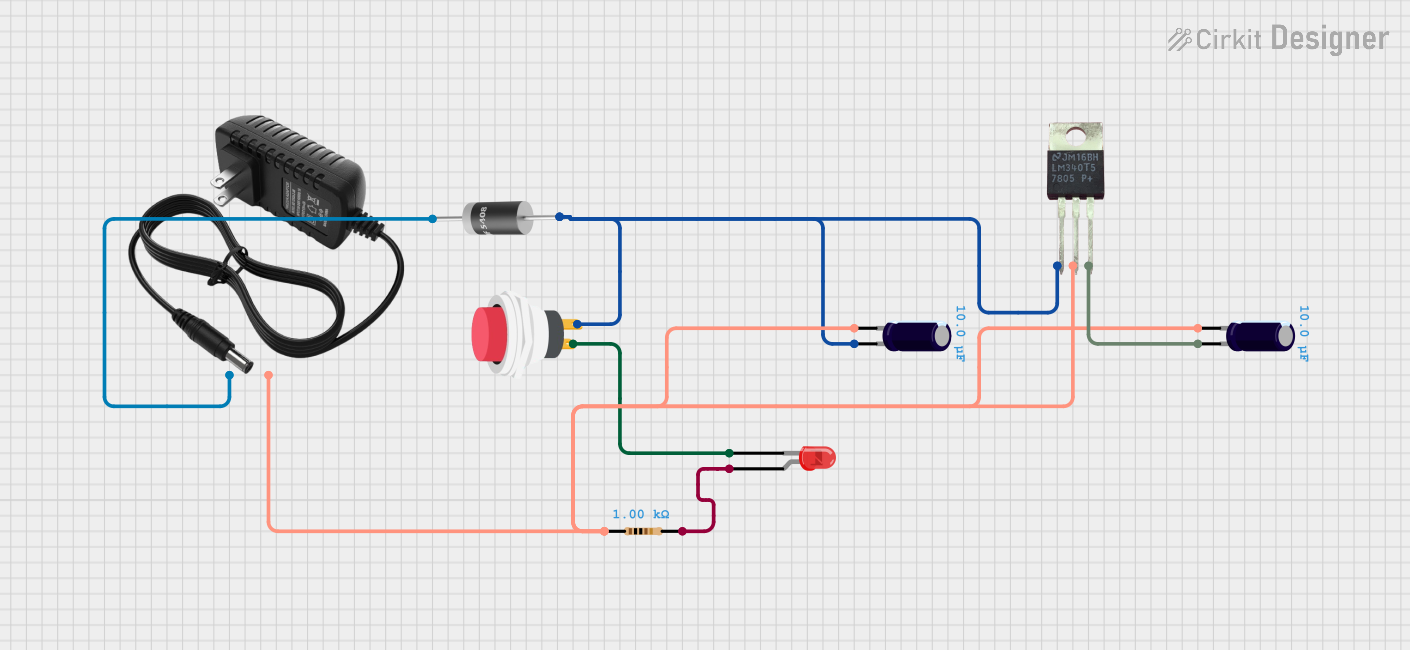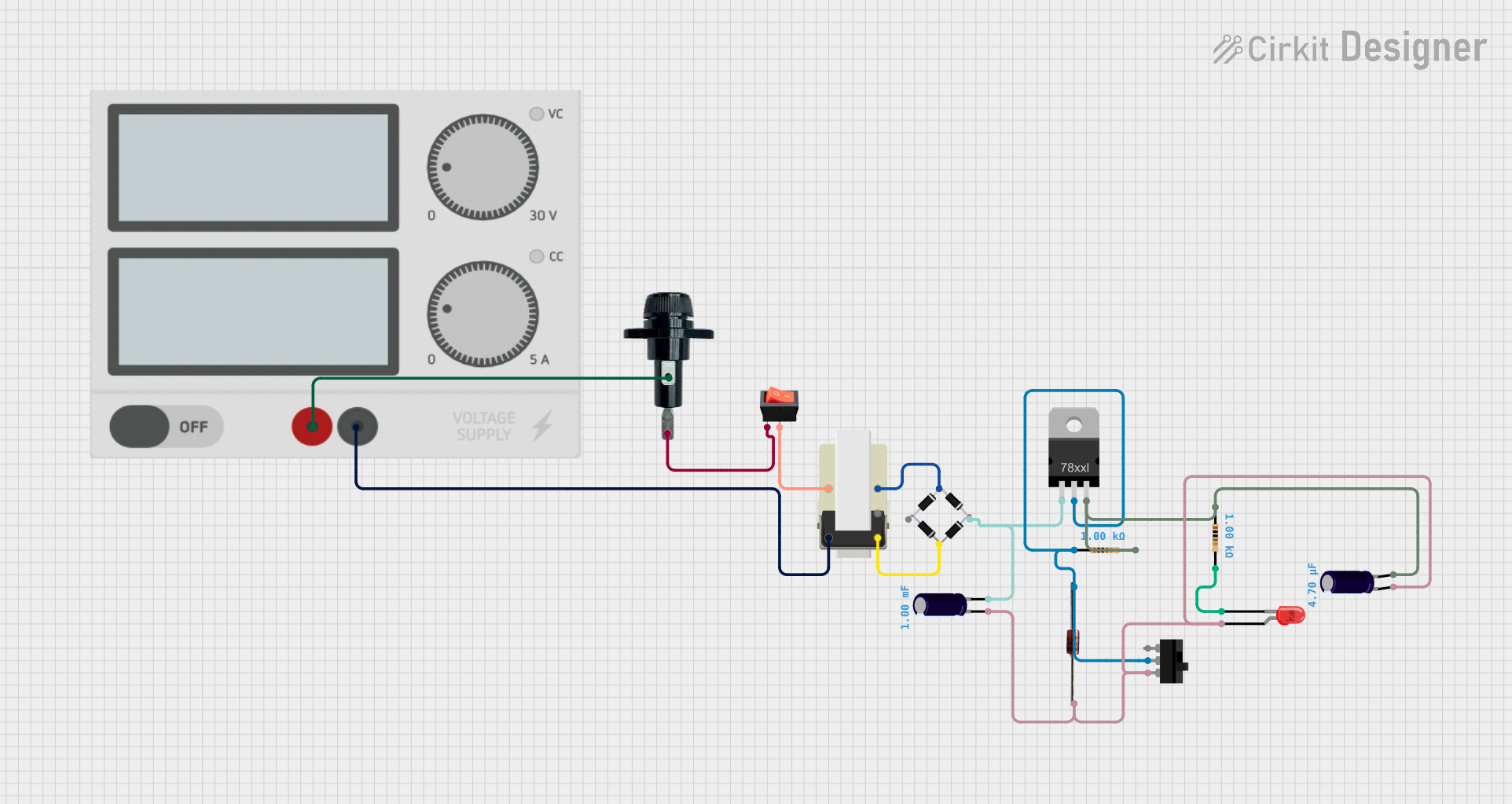
How to Use 5V, 3A Step-Up/Step-Down Voltage Regulator S13V30F5: Examples, Pinouts, and Specs

 Design with 5V, 3A Step-Up/Step-Down Voltage Regulator S13V30F5 in Cirkit Designer
Design with 5V, 3A Step-Up/Step-Down Voltage Regulator S13V30F5 in Cirkit DesignerIntroduction
The 5V, 3A Step-Up/Step-Down Voltage Regulator S13V30F5 (Manufacturer Part ID: 4082) by Pololu is a versatile DC-DC converter designed to provide a stable 5V output regardless of whether the input voltage is higher or lower than 5V. This regulator is ideal for applications requiring a consistent 5V supply, such as powering microcontrollers, sensors, and other electronic devices.
Explore Projects Built with 5V, 3A Step-Up/Step-Down Voltage Regulator S13V30F5

 Open Project in Cirkit Designer
Open Project in Cirkit Designer
 Open Project in Cirkit Designer
Open Project in Cirkit Designer
 Open Project in Cirkit Designer
Open Project in Cirkit Designer
 Open Project in Cirkit Designer
Open Project in Cirkit DesignerExplore Projects Built with 5V, 3A Step-Up/Step-Down Voltage Regulator S13V30F5

 Open Project in Cirkit Designer
Open Project in Cirkit Designer
 Open Project in Cirkit Designer
Open Project in Cirkit Designer
 Open Project in Cirkit Designer
Open Project in Cirkit Designer
 Open Project in Cirkit Designer
Open Project in Cirkit DesignerCommon Applications and Use Cases
- Powering microcontrollers like Arduino, Raspberry Pi, or ESP32.
- Supplying stable voltage to sensors and actuators in robotics.
- Battery-powered devices where input voltage fluctuates (e.g., Li-ion or AA batteries).
- Portable electronics requiring a reliable 5V output.
- Prototyping and development boards.
Technical Specifications
The following table outlines the key technical details of the S13V30F5 voltage regulator:
| Parameter | Value |
|---|---|
| Output Voltage | 5V ± 4% |
| Maximum Output Current | 3A |
| Input Voltage Range | 2.8V to 22V |
| Efficiency | Up to 95% |
| Quiescent Current | ~0.4 mA (no load, 5V input) |
| Switching Frequency | ~1.5 MHz |
| Operating Temperature | -40°C to +85°C |
| Dimensions | 0.9" × 0.6" × 0.1" (23 × 15 × 3 mm) |
| Weight | 1.2 g |
Pin Configuration and Descriptions
The S13V30F5 regulator has three main pins for easy integration into circuits. The table below describes each pin:
| Pin Name | Description |
|---|---|
| VIN | Input voltage pin. Connect to a DC power source (2.8V to 22V). |
| GND | Ground pin. Connect to the ground of the circuit. |
| VOUT | Output voltage pin. Provides a regulated 5V output with a maximum current of 3A. |
Usage Instructions
How to Use the Component in a Circuit
Connect the Input Voltage (VIN):
- Attach the VIN pin to a DC power source within the range of 2.8V to 22V.
- Ensure the power source can supply sufficient current for your load.
Connect the Ground (GND):
- Connect the GND pin to the ground of your circuit.
Connect the Output Voltage (VOUT):
- Attach the VOUT pin to the device or circuit requiring a 5V supply.
- Ensure the total current draw does not exceed 3A.
Add Capacitors (Optional but Recommended):
- For improved stability, place a capacitor (e.g., 10 µF) close to the VIN and GND pins.
- Similarly, add a capacitor (e.g., 10 µF) between VOUT and GND.
Important Considerations and Best Practices
- Heat Dissipation: At high currents, the regulator may generate heat. Ensure adequate ventilation or consider adding a heatsink if necessary.
- Input Voltage Range: Do not exceed the maximum input voltage of 22V, as this may damage the regulator.
- Load Current: Ensure the connected load does not draw more than 3A to avoid overloading the regulator.
- Polarity Protection: The regulator does not have built-in reverse polarity protection. Double-check connections before powering the circuit.
Example: Using with an Arduino UNO
The S13V30F5 can be used to power an Arduino UNO from a battery pack. Below is an example circuit and Arduino code:
Circuit Connections
- Connect the VIN pin of the regulator to the positive terminal of a 4xAA battery pack (6V).
- Connect the GND pin of the regulator to the negative terminal of the battery pack.
- Connect the VOUT pin of the regulator to the 5V pin of the Arduino UNO.
- Connect the GND pin of the regulator to the GND pin of the Arduino UNO.
Arduino Code Example
// Example code to blink an LED connected to pin 13 of the Arduino UNO
// Ensure the Arduino is powered via the S13V30F5 regulator.
void setup() {
pinMode(13, OUTPUT); // Set pin 13 as an output
}
void loop() {
digitalWrite(13, HIGH); // Turn the LED on
delay(1000); // Wait for 1 second
digitalWrite(13, LOW); // Turn the LED off
delay(1000); // Wait for 1 second
}
Troubleshooting and FAQs
Common Issues and Solutions
No Output Voltage:
- Cause: Incorrect wiring or insufficient input voltage.
- Solution: Verify all connections and ensure the input voltage is within the 2.8V to 22V range.
Overheating:
- Cause: Excessive load current or poor ventilation.
- Solution: Reduce the load current or improve airflow around the regulator.
Output Voltage Fluctuations:
- Cause: Insufficient input power or lack of decoupling capacitors.
- Solution: Use a stable power source and add capacitors near the VIN and VOUT pins.
Regulator Not Working with Low Input Voltage:
- Cause: Input voltage is below the minimum required for the load.
- Solution: Ensure the input voltage is at least 2.8V and can supply sufficient current.
FAQs
Q: Can I use this regulator to power a Raspberry Pi?
A: Yes, but ensure the total current draw (including peripherals) does not exceed 3A.
Q: Does the regulator have reverse polarity protection?
A: No, the regulator does not have built-in reverse polarity protection. Double-check connections before powering the circuit.
Q: Can I use this regulator with a solar panel?
A: Yes, as long as the solar panel's output voltage is within the 2.8V to 22V range and can supply sufficient current.
Q: What is the efficiency of the regulator?
A: The efficiency can reach up to 95%, depending on the input voltage and load conditions.